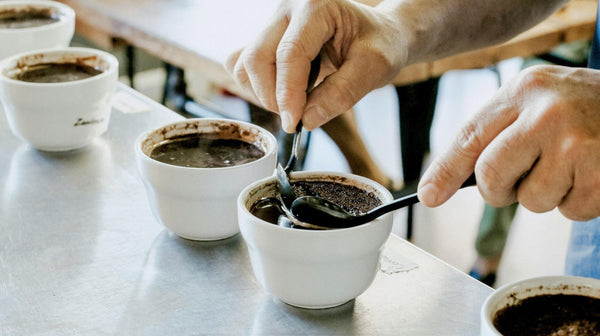Sip Into The Cup: On Coffee Waves

When we speak about coffee, we speak about the tale of transformation. From a humble fruit on a branch to the aromatic bean appealed globally, coffee has transcended beyond ripples in a cup. Originally, during the 15th century, coffee was cultivated by the practitioners of Sufism in Yemen to reach enlightenment in their midnight prayers. Sure, its heritage dates back centuries to the Ethiopian plateau, where the infamous Khaldi found the ‘fruit’ with the help of his goat. However, it was in Yemen, where coffee began to be consumed as a beverage.
Once the Ottoman Empire gained control of Yemen in 1536, coffee swiftly became a vital component of the Yemeni economy. The discovery by the monks then led the drink to flourish in secular settings as it gained notoriety for its stimulant properties. Coffee became ingrained in daily ritual and coffee houses—often referred to as Schools of Wise, established across the area and Near East as a social gathering place for men.
Recognizing Yemen's potential for exporting significant quantities of coffee, the Ottomans facilitated its trade on a global level, marking the first instance of coffee being traded internationally, in which it initiated coffee movements that have shaped the coffee industry and by extension, society.
The First Wave: Niche to Necessity

Photo by Annie Spratt on Unsplash
While the West would not adopt coffee until late in the establishment of the beverage, their role would grow to define its place in the world’s future. Coffee arrived in the Americas by the 1700s, but it wasn't widely popular until after the Boston Tea Party in 1773. This act of defiance against British tea taxes sparked a surge in coffee consumption, fueled by a sense of patriotism.
With a growing demand for coffee, the American colonies looked to South America, where coffee production was flourishing thanks to rising European demand. Importing coffee directly from South America was significantly cheaper than getting it from Europe or Asia, making it the ideal source for the colonies.
The trend continued with events like the Civil War, where soldiers relied on coffee as an energy boost. Back then, coffee was typically transported unroasted and roasted at home over open fires, leading to inconsistent quality. However, in the early 19th century, the ease and affordability of South American coffee spurred the rise of American coffee companies. Folgers (1850) and Maxwell House (1892) are just a couple of notable examples.
By the 20th century, coffee had become a staple in American households. The arrival of instant coffee coincided with the Industrial Revolution, perfectly aligning with the need for a convenient and consistent caffeine fix, even if it meant sacrificing some flavor with brands like Nescafé (1938) that led the way in its commercialization.
While Indonesia was a major player in supplying coffee beans during the first wave globally, the story of instant coffee in Indonesia is a bit different. Widespread adoption of instant coffee in Indonesia likely came later, possibly coinciding with the second wave mid 1900, when international brands gained traction. This delay could be due to factors like continued preference for traditional brewing methods or the initial focus of Indonesian production on supplying beans rather than catering to domestic instant coffee consumption. Kopi Kapal Api (1927) is one of many brands that emerged from this era and still managed to uphold its position as instant coffee pioneer in Indonesia.
The Second Wave: Folgers to Fancy Brews

Photo by Brooke Cagle on Unsplash
The ubiquitous, often unremarkable coffee of the first wave faced growing dissatisfaction in the late 20th century. A booming post-war economy in the United States fueled a desire for experiences and products that went beyond mere functionality. This shift in consumer preferences led to the rise of "second-wave coffee," a revolution that transformed coffee from a morning pick-me-up into a sensory experience.
Peet's Coffee, established in 1966 by Alfred Peet, is considered a pioneer of the second wave. Peet believed in sourcing high-quality beans, lighter roasts that accentuated the beans' natural flavors, and meticulous brewing methods. This focus on quality and craftsmanship resonated with a growing segment of coffee drinkers seeking a more nuanced coffee experience.
By the 1980s, the second wave was in full swing. Companies like Starbucks, inspired by Peet's approach, capitalized on the growing demand for specialty coffee. They introduced espresso-based drinks like cappuccinos and lattes, previously unfamiliar to many American coffee drinkers. This wave also saw the rise of skilled baristas who treated coffee preparation as an art form, emphasizing proper grinding, brewing techniques, and latte art.
Perhaps the most significant contribution of the second wave was its focus on coffee origin. For the first time, coffee beans were labeled with their place of origin, allowing consumers to explore the unique flavor profiles of coffees grown in different regions. This newfound appreciation for the bean's source laid the groundwork for the even more specialized "third wave" of coffee that emerged later.
The Third Wave: Mass Markets to Micro-Roasted Marvels

Photo by Battlecreek Coffee Roasters on Unsplash
The world of coffee has undergone a fascinating evolution. Third-wave coffee represents a dramatic shift from the large, national chains of the second wave to a vibrant community of independent, local roasters and cafes. Here, the focus is laser-sharp: crafting the most exceptional cup possible, with quality reigning supreme over all else.
The term "third wave" is relatively young, coined in 2002 by Trish Rothgeb in an article for The Flamekeeper, a publication of the Roasters Guild. This article categorized coffee's historical trajectory into three distinct "waves." Rothgeb's terminology resonated, and "third wave" became the widely recognized term for this movement.
At its core, the third wave is driven by a deep appreciation for the inherent character of coffee itself. It's a passionate counterpoint to the often-mediocre coffee and its promotion that dominated the past. While marketing and social media play a role in the third wave's growth, they aren't the driving force.
Here's a simplified breakdown of the three waves:
- First Wave: Availability was key. Large-scale production and national distribution ensured coffee reached the masses.
- Second Wave: Quality improved, but the focus shifted to marketing the experience – think coffee shops with ambience and specialty drinks.
- Third Wave: Production and marketing take a backseat. The spotlight shines on the coffee itself, its origin, and the meticulous preparation methods used to unlock its full potential.
The year 2000 marked a significant turning point. The inaugural World Barista Championships signaled a global shift in coffee trends. Initially dominated by Scandinavians, the competition quickly gained traction in the US and Europe, sparking a worldwide firestorm of coffee passion.
Independent coffee shops, brimming with passionate owners and baristas, became the heart of the third wave. Their focus was unwavering – to deliver an exceptional cup experience. These shops embraced storytelling, sharing the fascinating origins and brewing techniques behind each single-origin roast and unique blend.
Transparency became another hallmark of the third wave. Consumers, empowered by this transparency, could trace their favorite coffee back to the specific farm where it was cultivated. Factors like soil composition, altitude, and processing methods took center stage for discerning coffee enthusiasts. Many fell in love with the nuanced flavors and purity of these specialty roasts, fueling a home-brewing revolution. Pour-over brewers like Chemex became ubiquitous, and innovative tools like the Hario V60, born in 2012, provided additional options for brewing exceptional coffee at home.
While the third wave has undoubtedly enriched the coffee industry, it's not without its challenges. The focus on quality often translates to higher prices. Fair-trade practices, small-batch production, rising export and shipping costs, expensive real estate impacting cafe operation costs, and increasing labor costs all contribute to a steeper price tag for consumers. Consequently, the third-wave coffee shop experience is no longer universally accessible. Many have shifted to premium locations, potentially alienating minorities and low-income households.
The story of third-wave coffee is one of continuous evolution, balancing the pursuit of exceptional coffee with inclusivity and affordability. It's a fascinating journey that continues to unfold.
Catching Up with the Waves
The concept of "waves" in coffee, popularized by articles like Progreso's "The Waves in the Coffee Industry Trends," offers a helpful roadmap, but it's not without its flaws. This framework primarily reflects trends in the Western world, particularly the US, and might not capture the entire coffee story globally. Additionally, the analysis leans heavily on coffee shops since the second wave, neglecting the significant portion of coffee enjoyed at home.
Most importantly, the "waves" shouldn't be seen as a rigid sequence where one replaces the other. Instead, they co-exist and build on each other's innovations. For example, flaws within a wave can lead to changes that eventually spark a new trend. There's broad agreement on the first three waves: the first focused on affordability, the second on quality coffee experiences in cafes, and the third on bean origin, sustainability, and meticulous brewing methods.
The fourth and fifth waves? Here's where things get debated. Many experts question their existence or defining features, likely because these are ongoing trends still taking shape. Proposed characteristics of the fourth wave often revolve around addressing perceived shortcomings of the third wave, like potentially high prices and a focus on premium coffee shops that might exclude some demographics.
The "wave" metaphor might have limitations, but it highlights the coffee industry's dynamic nature. By understanding these trends, businesses can better navigate the market. The second wave showed the value of quality over commodity coffee, while the third wave emphasized the importance of the entire coffee journey and sustainability. The jury's still out on the distinct characteristics of the fourth and fifth waves, but the focus on continuous improvement and inclusivity seems to be a common thread.
For those familiar with the ocean or vast lakes, the rhythmic pulse of waves rolling in is a familiar sight. Surfers, or even casual observers, understand the importance of staying balanced on a wave or strategically catching the next one at the perfect moment. This analogy perfectly captures the ever-evolving world of coffee.




